A New Set of STEM Books That Will Fascinate and Delight
Posted by Remya Padmadas on December 28, 2016Most of StoryWeaver's digital-first books explore STEM (Science, Technology, Engineering, Math) topics in interesting and fun ways. Some of you may remember some of our amazing STEM titles from last year: 'How Old is Muttajji?', 'Jadav and the Tree-Place', 'Up World, Down World', 'Dum Dum-a-Dum Biryani!', etc. We’re happy to announce that these are also being printed early next year!
“This year, we’ve tried to create books that are simpler than last year, based on conversations with our outreach partners. Simpler does not mean easier, of course, and in many ways it has been more challenging. Fortunately, we’ve been working closely with some of the finest editors, writers, illustrators, art directors and translators who have helped us create a set of wonderful books. While the aim of each book is to inform and educate, the idea is also to nurture the innate sense of wonder in children and in turn, encourage them to explore further,” shares Yamini Vijayan, who anchors content creation for StoryWeaver.
Exciting ideas through exciting partnerships
This year, we hope to widen the lens through which children look at the world around them, with stories that explore topics like space, types of houses, trash, seasonal food, subtraction, evolution, simple machines and even toilets!
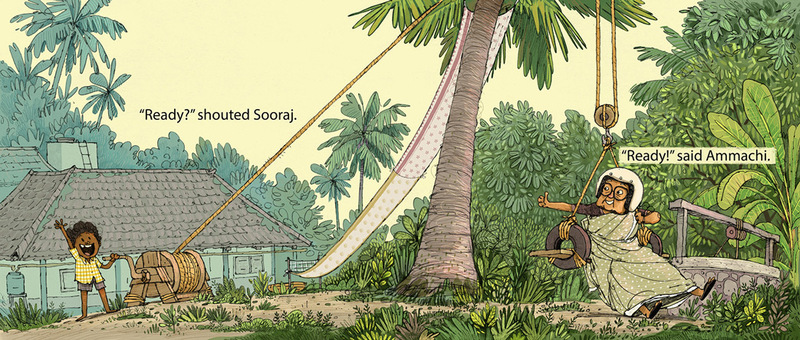
From author-illustrator Rajiv Eipe's book on simple machines
These books have been created in collaboration with 4 Guest Editors and 2 Art Directors. Award-winning author Roopa Pai has steered the books on math, Bijal Vachharajani – a journalist who writes on nature and the environment – has given shape and form to the books on environment, author-illustrator Vinayak Varma, former Editor and Art Director of Brainwave Magazine, has helped create fun science books and author-editor Payal Dhar has made technology and engineering appealing to young minds. With illustrations being such an integral aspect of these books, we were keen to involve experts in the field and so these books have been art-directed by talented illustrators Kaveri Gopalakrishnan and Vinayak Varma. We’re excited to say that some of the most promising authors and illustrators have contributed to the creation of these 20 titles.

Priya Kuriyan brings Neema to life in vivid colours in 'What's Neema Eating Today?' by Bijal Vachharajani
In Math, we have books on subtraction, patterns of similarity and dissimilarity, division and estimation. Needless to say, all these have been explained through simple stories that show how we use math in our everyday lives and that it isn’t restricted to our textbooks alone. At Pratham Books, we have always realized how important it is to have conversations about the environment to children. This year, we have chosen to focus on trash, seasonal food, migration and earthquakes. Themes in science that we have decided to ‘storify’ are simple machines, virology, evolution and the lives of gharials. We’re certain that early readers will become more enthusiastic about science after reading these enchanting stories. You’d think that children’s stories on technology and engineering can get a bit boring. Well, you’ll change your mind when you read our stories on space, wheels, flying, types of houses and toilets. In addition to these STEM books, we have two moving stories on emotional intelligence, one on anger and the other on perseverance.
Here's what we've digitally published so far:
Environment
What's Neema Eating Today? Neema loves to eat seasonally, and you will to now!
Science
Ammachi's Amazing Machines How simple can simple machines be? Ammachi's here to teach you!
Apu's Giant Earthquake: what's causing those tremors?
Sniffles, in which a girl spreads her cold during a football match.
Ghum-Ghum Gharial's Glorious Adventure, a young Gharial's adventure in the Ganga.
Math
One by Two Share some biryani and gulab jamuns and learn a thing or two about fractions!
More or Less? Need to Guess! How many sweet boxes do the wedding guests need? Guestimation to the rescue!
I Spy! How many children are left at a birthday party?
Same-same or different?, showing the friendship between a Sparrow and a Snake and also explaining the idea of sorting.
Technology
Gul in Space: a girl explores outer space.
In keeping with our commitment to creating good quality multilingual content for children, each of the 20 titles will be translated to Hindi, Marathi, Kannada and Tamil. (Plus, don’t forget, on StoryWeaver you can translate the stories to a language YOU’RE fluent in and help us spread the joy of reading to even more children.) The development of these 100 books (20 titles in 5 languages) has been supported by Oracle.
To say that we’re excited about these new stories is an understatement! We cannot wait to share them with readers, young and old. Happy reading!
Be the first to comment.Stories for 2017: 10 Themes for a Happy New Year!
Posted by Sherein Bansal on January 06, 2017‘If you’re skilled at something, don’t give it away for free’ is a piece of advice that we heard so many times growing up, that just the fact that a thing called CC BY License even exists seems absurd and foolish by today’s standards. But that’s what Pratham Books' 1.5 year old digital platform StoryWeaver, all its illustrators, authors as well as translators believe in – free dissemination of our books in order to achieve our ultimate goal: ‘A book in every child’s hand’. In 2016, with 5326 stories uploaded on StoryWeaver, 25 languages added, and 1,19,132 new visitors (A warm hello to you all!), we feel truly grateful. It is indeed a Happy New Year for the StoryWeaver family. So we would like to express our heartfelt New Year wishes to you all in the best way we know. By highlighting here just 10 of our books that speak of themes that currently are, and will remain, points of discussion and action in 2017.
Environment
Chipko Takes Root written and illustrated by Jeyanthi Manokaran
We seriously need to drop the act that we are gracious hosts to nature, and are ‘allowing’ it to be. It’s the other way round. With some people claiming proudly that global warming is not real, and regressive environmental policies being made all over the world, it’s important to keep talking about conserving nature. Here’s a story about one of the bravest fights in India that made Chipko Movement a force to reckon with.
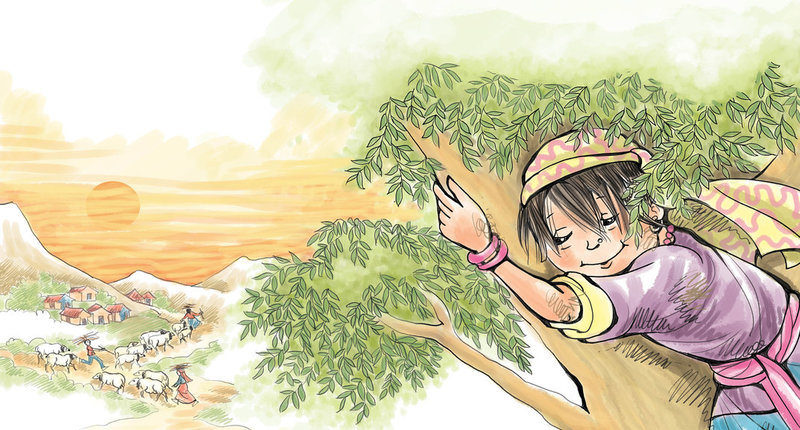
Technology
Bonda and Devi by Roopa Pai and Jit Chowdhury
Any one of us who successfully evaded technology as much as they could before, now must make their peace with it in this digital economy. We don’t know where technology will take us in 2017, but we know where it might reach in 2080! Read about this futuristic tale about two very unlikely friends. Maybe we can be friends with technology too, just like Devi in this story? Available in 9 more languages!
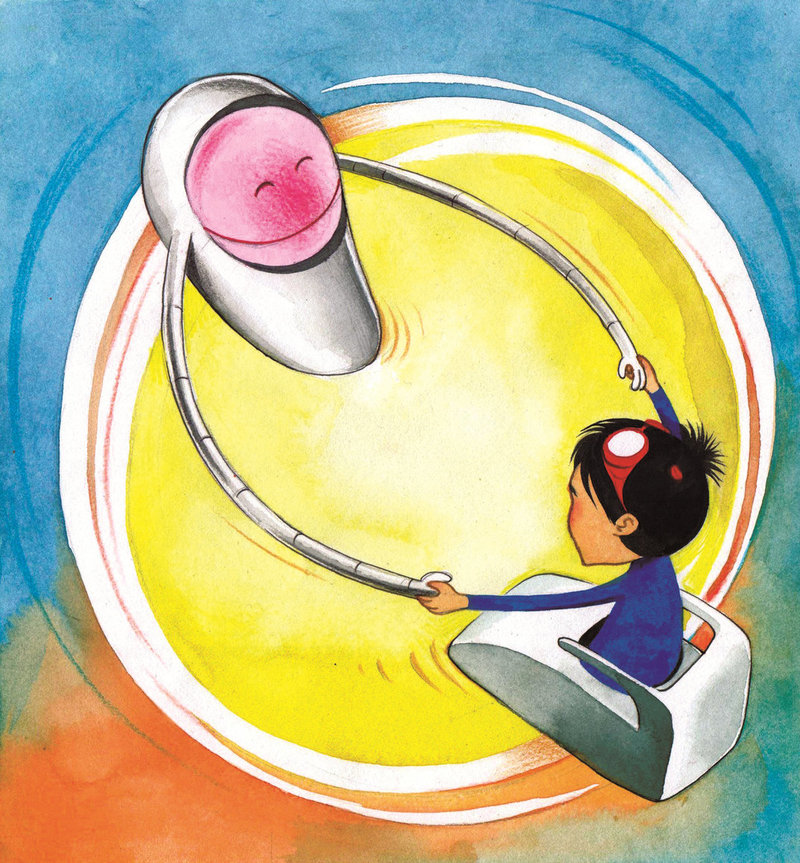
Education
Counting on Moru by Rukmini Banerji and Nina Sabnani
It’s a failure of our education system for not recognizing students as individuals and keeping them at a ‘uniform’ pace of comprehension with each other. This moving story in Hindi, Kannada, Odia and Marathi, talks about how how easy it is to lose your spark when you're a student under the wrong teacher and regain it with the right one.
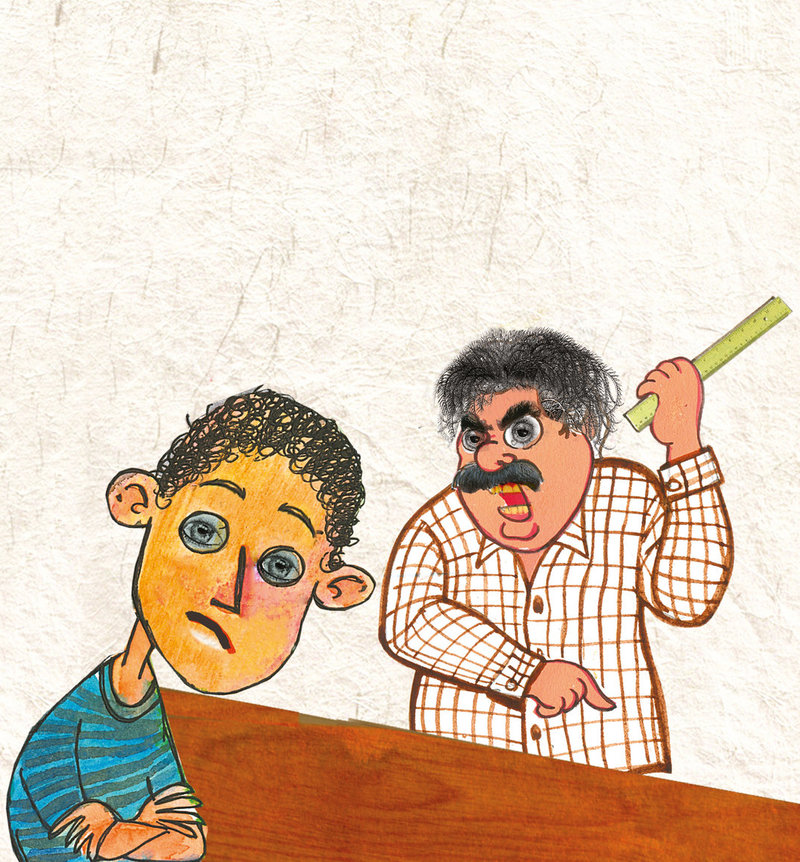
Community Activism
Wildlife in a City Pond by Ashish Kothari and Sangeetha Kadur
When the good ones are silent, the misguided will shout and reign. Be the first voice to speak up against loss of beauty and justice. Here’s a story that flows like a poem and builds up your love for something that this neighborhood derives so much peace and wisdom from that you will want to protect it yourself.
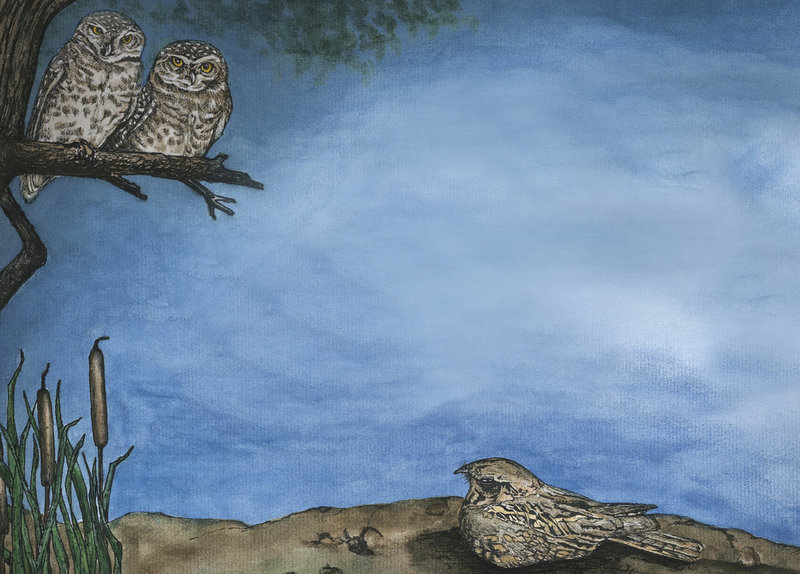
Sports
Dhyan Singh ‘Chand’: Hockey’s Magician by Dilip D'Souza and Mohit Suneja
Let’s, for once, not talk about Hockey with a sense of guilt at not having given it too much traction in life. Let’s just read this story about Dhyan Chand- one of the best things to have happened to Hockey and one of the worst that happened to Hitler. Win, win all the way and yet he stayed humbly devoted to the sport all his life. A man worth knowing about, he will teach you the true meaning of sportsmanship spirit.
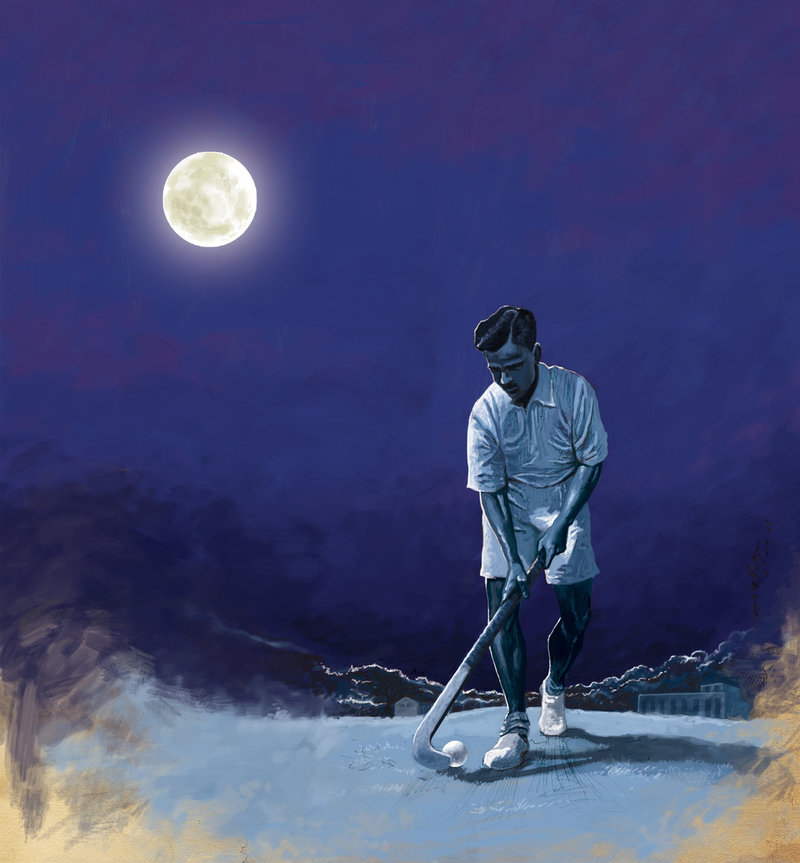
Humour
Yes, humour is indeed an important point of discussion. And more importantly, action. 2016 clearly needed a hug, and some jokes. So we are better prepared this time for 2017 with our fun story – ‘Phani's Funny Chappals’ by Sridala Swami and Sanjay Sarkar, and our Spotathon entry ‘Messy Miss Mita’ by Jisha Unnikrishnan.
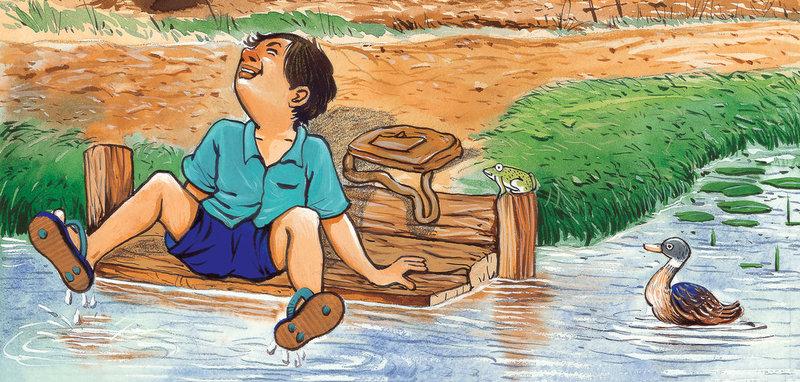
Art
Travelling inwards is just as important as travelling outwards. We need art now more than ever to connect with an ever-expanding world, and to convey our strongest messages and passions with more ease and solidarity. Experience beauty, talent and magic all woven, embroidered and sculpted together in our Dastkari Haat Books.
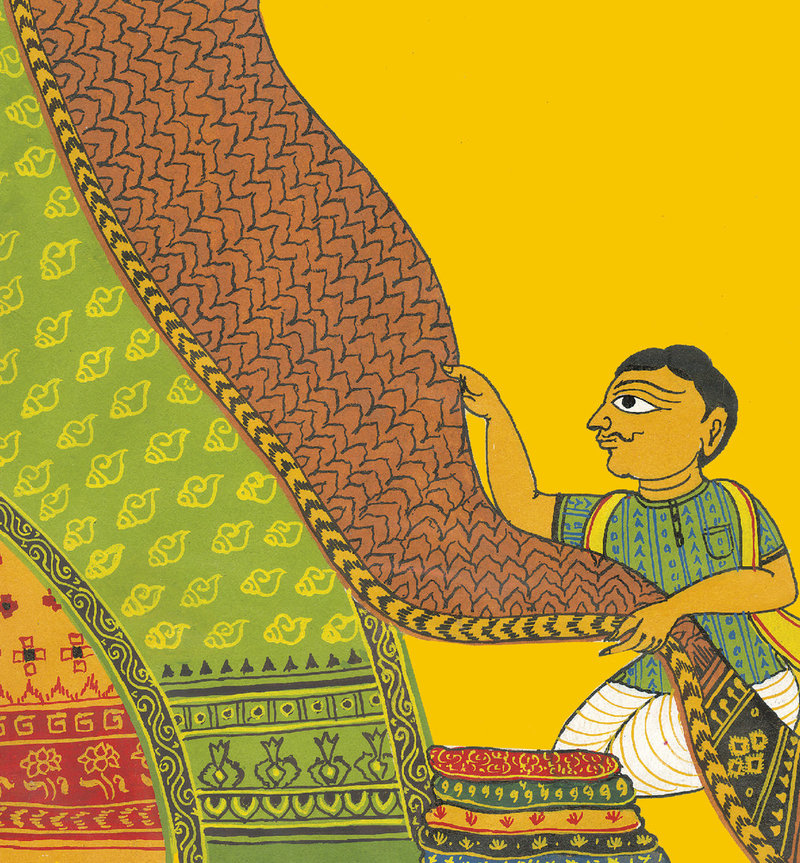
Health
Gargi and Soapy by Preethi Unnithan and Sorit Gupto
Physical, spiritual, mental and emotional health. Let’s make a new year resolution to take care of it all. Here’s a story by our SW community member about a world where a soap called Soapy will fight the evil germs and restore balance and health!
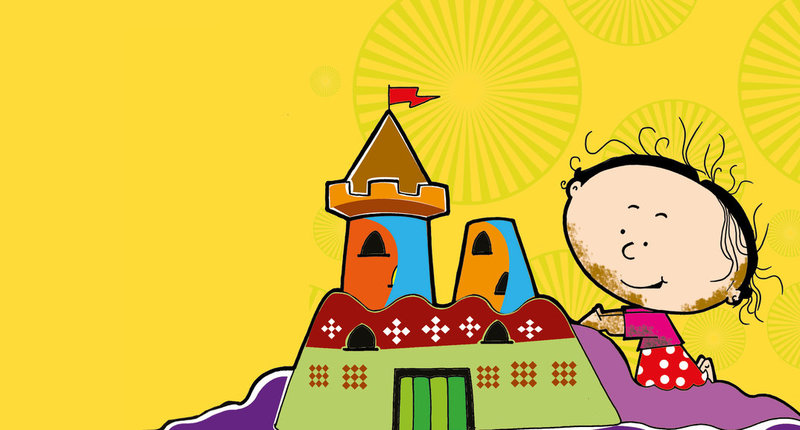
Diversity
Why is Nita Upside Down? By Roxana Bouwer and Sarah Bouwer
Dismissed someone lately or ridiculed someone in your mind (because doing it to their face would be politically incorrect) just because they did not look, talk or well… live, like you do? This one’s for you then. Let’s look at how a child sees a playground, and let’s compel ourselves to look at people and accept them the way they are in this judgment-reflexed world.
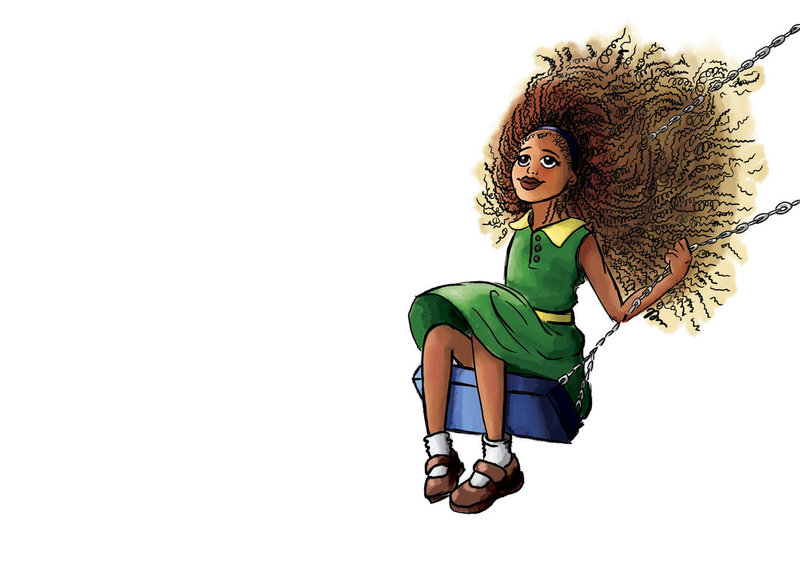
Family
وصیت by Anis Azmi and Juhi Agarwal
There are all kinds of families. But as this Urdu story shows, not one can function without mutual trust and respect - Values that can make 2017 better for everyone. Ride a camel to Egypt and pay a visit to this family? Let’s go.
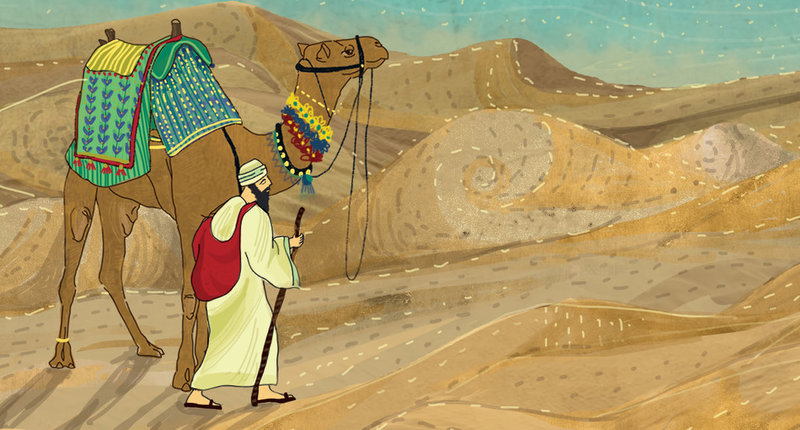
Which theme concerns you the most as we step into a new year? Tell us in the comments, or on Twitter and Facebook.
Be the first to comment.Death of a Language is Death of a Culture
Posted by Remya Padmadas on December 27, 2016
Sahitya Akademi Award winner for his novel ‘Karmelin' and also, the recipient of the Vimala V. Pai Vishwa Konkani Sahitya Puraskar award for his novella 'Tsunami Simon', Damodar Mauzo is a novelist, a short story writer, a critic and a script writer. His collection of stories ‘Teresa’s Man’ was nominated for Frank O' Connor International Award in 2015. Co-founder of Goa Art & Literature Festival and also a co-curator of the litfest, Damodar Mauzo, would perhaps, best introduce himself as an activist for Konkani. He has presided over the All India Konkani Sahitya Sammelan, a literary conference in 1985 and also, served as president of the Konkani Bhasha Mandal, Goa’s premier organisation endeavouring the promotion of language, literature and culture.
I am a bit worried over the vulnerability of my language, Konkani. Not that it is losing its vibrancy. Not because it faces any threat from globalization nor because the number of speakers is on decline. What worries me is intergenerational transmission process getting disrupted or halted.
In spite of the imposition of the Portuguese by the colonial regime by passing the Decree in 1684 to ban the use of Konkani even in speech, the language remained Lingua Franca, thanks to its speakers. Konkani has also survived the threat from the neighbouring language Marathi that had claimed it to be its dialect. The language has paid huge price for sustained existence. Today, Konkani is part of the Eighth Schedule of the Constitution and also is the Official Language of the state of Goa. With Jnanpith and Sahitya Akademi awards coming her way meritorious Konkani literature is being taken cognizance of nationally and internationally. Yet, when threat of extinction looms large on many leading languages, I do become apprehensive, not without grounds. The first scare I felt was in February 2010, when the last speaker of Bo language of Andaman islands, Boa Sr. died. Death of a language is the death of a culture. People the world over strive to safeguard their culture as their language is their identity. They have already taken a proactive stand to preserve their linguistic identity anticipating the hegemony of the English language in the wake of the Internet Era. Aware of the situation moving towards monolingual world UNESCO had started a project called Universal Networking Language (UNL), that would thwart the monopoly of one language. Vide UNL, the content in one language would be codified and then would be transferred into any desired language by decoding it. At some stage it was noticed that this project was not moving on at the behest of the perpetrators of domination of English. It was only when Japan, France and Germany raised their voice at this mischief that the project picked up momentum.
It is true that there are, the world over, around seven thousand spoken languages, over half of which are feared to die by the end of the present century. Of these about 2000 languages are seriously endangered as they have fewer than 1000 speakers. In India itself 191 languages are classified as vulnerable or endangered. 1961 Census of India recorded total number of languages as 1,652. However, 1971 Census eliminated many of them following the decision to ignore the languages with less than 10,000 speakers. Dr. Ganesh Devy of Peaple’s Linguistic Survey of India (PLSI) says, “As per the 2011 Census, there are about 122 languages spoken by more than 10,000 people. Of them 22 are the scheduled languages. Other than the 122 languages, the survey has come up with languages that are spoken by less than 10,000 people many from tribal areas, nomadic communities and from the interiors of north-eastern part of the country.” The PLSI is a rights-based movement, which sees language as crucial for the effective development of fragile communities and for stemming the erosion of India’s diverse, multilingual, and composite heritage.
For Konkani, the major jolt is the shift in the medium of instruction. People prefer to send their wards for primary education to either Marathi medium or the English. Marathi because it has been a tradition and English because it is trendy. Masses that follow the classes blindly believe that their wards will immensely benefit by this shift, not realizing that the ward will never master the OTHER language. A UNESCO report says, “In a situation where the medium of instruction in school is a language that is not spoken at home the problems of learning in an environment characterized by poverty are compounded, and the chances of drop-out increase correspondingly.” At yet another UN meet on the subject it was asserted that ‘states have an obligation to preserve and protect the child's cultural identity, as an essential element for his or her development.’ It is a proven fact that Mother tongue literacy classes improve students' writing and higher-order language skills in their first language. Research has shown that many of the skills learned in the native language can be transferred easily to the second language later. In this type of program, the native language classes do not teach academic subjects. The second-language classes are content-based, rather than grammar-based, so students learn all of their academic subjects in the second language. But obviously the words of wisdom go unattended. In Goa, the Government does not realize that by promoting English at the primary level it is depriving the students of mastering Konkani and of learning Hindi as well. Leaving the choice of medium of instruction to parents is a grave mistake. Parents can be given the choice of choosing the physician, not the medicine. Similarly, parents can be given the choice to choose which school their ward would go, not the medium of instruction.
Goa is fast turning into a city state with its fast pace urbanization. The common dream of the youth is to go abroad or aboard ship. Greener pastures woo them and hence they feel no need of the proficiency in Konkani. In view of this confusing situation, the second generation classes are seen moving away from the language of the soil. The natural transmission is therefore interrupted. Though teatr, the popular form of theatre, is vibrant in Goa, the masses are seen blindly following the classes that are in favour of English in public and at home.
Konkani is rich in vocabulary and idiom. Our speakers live in diaspora in four different states. Their dialects help enrich the language. The multiplicity of scripts is yet another hurdle that limits the readership though conscious attempts are on to adopt a common script. As compared to the rest of the languages included in the Eighth Shedule, Konkani is spoken by hardly 4 to 5 million people. So in relative terms, Konkani is more vulnerable than many other languages, unless mindful and premeditated efforts are made to reach out to those who are on the verge of losing her.
Be the first to comment.